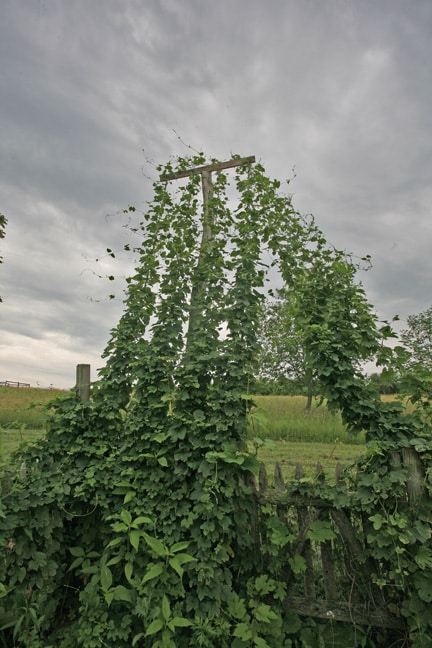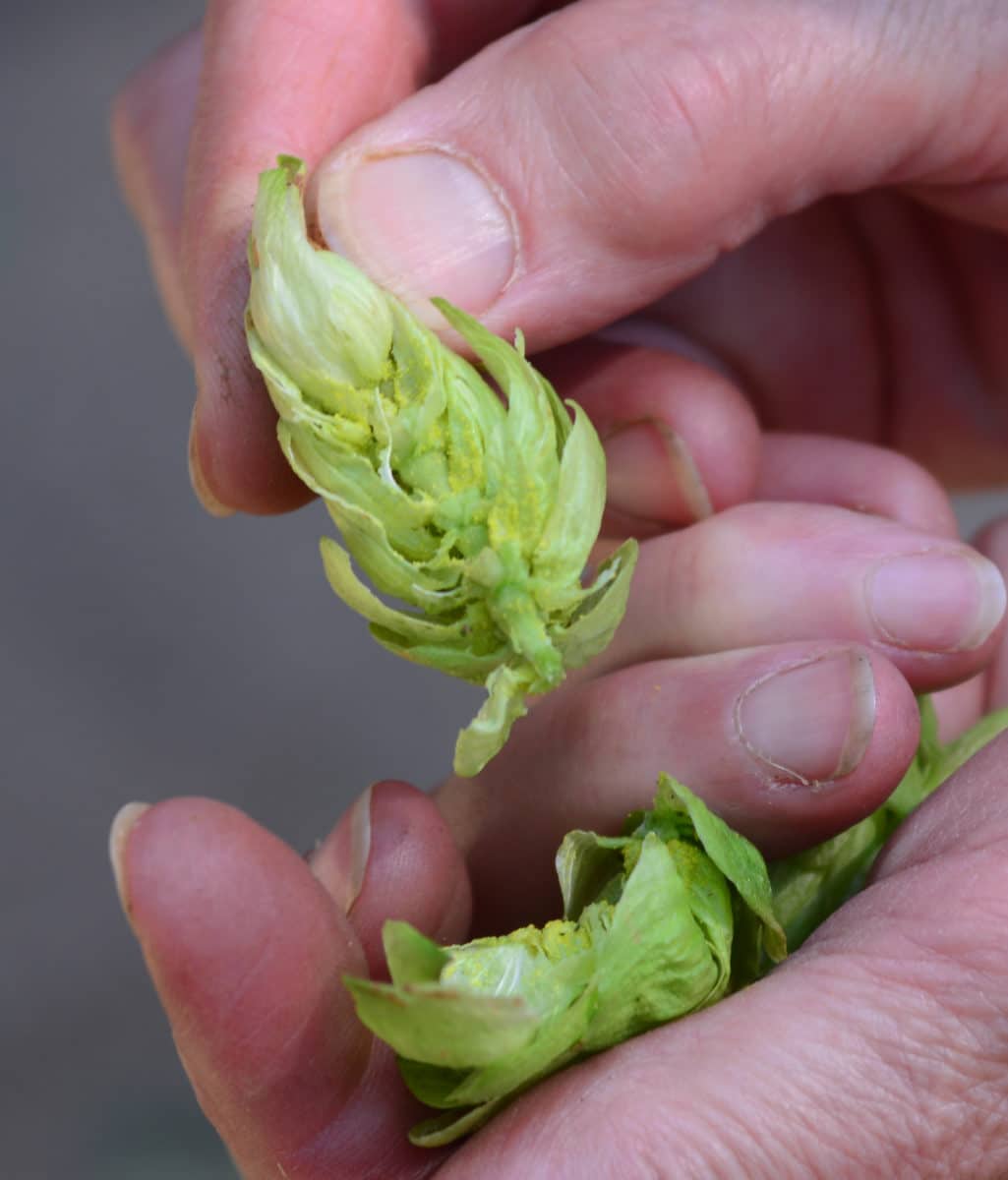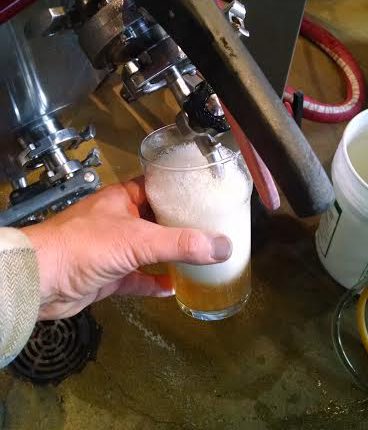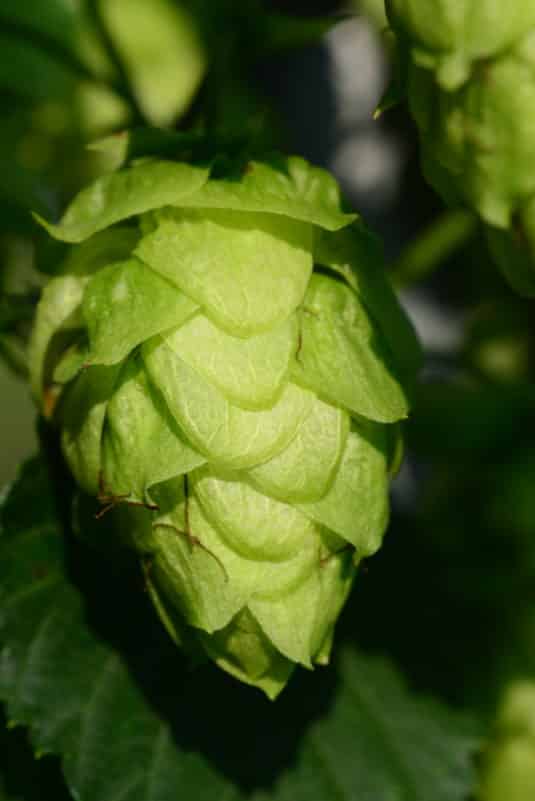The burgeoning interest in craft beer has given rise to a new fascination with that special ingredient that gives beer its bitter, refreshing flavor — hops. In past decades hops in the United States have been grown exclusively in vast hop yards of Washington, Oregon and Idaho to meet the tremendous demand from commercial breweries producing brands such as Miller, Coors and Budweiser. But now smaller craft breweries are taking over the scene and they are looking for specialty hops. In addition, the local foods movement has resulted in a new interest among its craft beer enthusiasts in drinking beers made with locally grown ingredients. All this energy has gotten people planting hops outside of the mega hop yards of the Northwest. Hop plants are sprouting in gardens, backyards and one-acre plots from Michigan to New England and New York to Virginia as growers and gardeners alike rediscover the lost art of small-scale hop cultivation.
The hop is a perennial bine (climbing plant) that climbs up and over everything in its path. It grows from underground rhizomes which sprout new shoots every year. These hardy shoots are among the first vegetation to emerge from the ground in early spring. The root and rhizome base, called a hop crown, sends up so many shoots that they must be pruned back, allowing the plant to put its energy into only a few strong shoots. This creates a lot of hand pruning work but it has its reward. Referred to in Europe as the “poor man’s asparagus” young hop shoots are delicious when sautéed. To prepare the hop shoots, brown a bit of crushed garlic in a pan with butter or olive oil and then simply add the hop shoots. Sauté the shoots for just two or three minutes on medium heat until tender. Add salt and pepper and serve them as a side dish drizzled with the pan drippings. Another option is to just steam the shoots lightly and dress them in lemon juice, salt, and pepper.
As a bine or climbing plant, the hop stem climbs by twisting its prickly stem around a support structure, as opposed to a vine, which climbs via delicate tendrils that twist and anchor the plant to nearby surfaces.

Given proper support the hop bine grows to great heights. The crop is the hop flower, which looks like a bright green, papery pine cone, and as a result hop flowers are simply referred to as “cones.” The cones contain a yellow, sticky resin called lupulin which contains alpha and beta acids along with essential oils. These are the compounds the brewers are after, as the acids and oils are what give beer its fragrant aroma and bitter taste.

There are many varieties of hops, each possessing a unique aroma and varying degrees of bitterness. Before the arrival of European colonists, hops grew wild in North America and were used by Native Americans for medicinal purposes. Hops have antibacterial properties and can be used to treat infection. In fact, their bacteria-fighting nature also makes them a good preservative. The introduction of hops into brewing in Europe hundreds of years ago kept beer from spoiling, allowing it to be shipped further, giving rise to a dramatic increase in trade. Hops are also a soporific. Pillows stuffed with dried hop flowers are used to induce sleep.
Hops contain phytoestrogen, an estrogen-like substance. New mothers have historically been advised to drink beer when nursing because it encourages the flow of breast milk. On the other end of the female fertility spectrum, hops can be used to treat the symptoms of menopause, such as hot flashes, that occur with reduced levels of estrogen. Men, however, can be afflicted by the phytoestrogen in hops. It is rumored that excessive consumption of beer can cause men to develop “beer breasts” as well as suffer from impotence referred to as “brewer’s droop.” Whether or not it is the hops that are causing these symptoms or too much alcohol remains unclear.

To produce cones rich in lupulin, hop plants demand lots of sun and water along with loads of nitrogen. An elevated trellis system composed of wooden poles, cable and a coconut fiber rope called coir support the hops as they climb, sometimes growing as fast as a foot in a single day. To maximize the number of cones the bines must be able to climb to a height of 18 feet. Once the bines reach the top of the trellis, right around the time of the summer solstice, they stop growing up and start growing out, developing side arms on which the flowers form. The cones make their first appearance as tiny, berry-like spheres called “burrs.” As the summer progresses they become larger and take on the pine-cone like appearance for which they are known.
Hops are harvested in late August and early September, once the moisture level in the cones begins to drop. Historically, hops were harvested by hand. Scores of people would migrate from the cities to the countryside, staying in camps during the harvest, plucking the cones from the bines and being paid by the pound. For the backyard hop grower hand picking is still the way to go, but today’s commercial growers use a mechanized process, cutting the bines and feeding them through a machine that strips them of their cones.


During the harvest season the fragrant, fresh-picked cones are used by brewers to make what’s called a “wet-hop ale.”This product is only available at this time of year. Otherwise, post harvest the cones are dried and compressed into bales which are stored under refrigeration. In many cases, hop cones are compressed even further into a pelletized form which takes up less space in storage and is easier for commercial brewers to work with.
As the craft beer craze goes locavore, brewers, beer aficionados and farmers alike are putting hops in the ground outside of the major growing areas in the Northwest, learning how to grow and process hops on a small scale to provide locally grown hops for local markets. There are many challenges along the way, but it is worth the work because at the end of the day waits a unique and tasty beverage. ![]()
